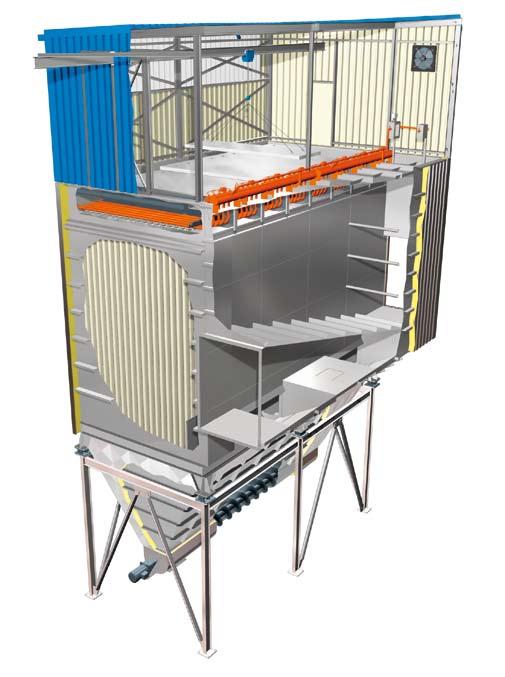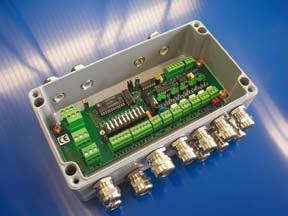
2 minute read
The intelligent control system
from impulse-Filter
by Scheuch

A cleaning system can only be as effective as its control system. For this reason, we began with the development of the IMPLUS filter program to simultaneously develop, build, and continuously adapt our own control systems to the needs of our customers.
Advertisement
This extensive knowledge base, including the ideas of customers, remains part of our company’s in-house expertise and with it, we are able to move more quickly to develop targeted innovations - both for filtration plants and control systems - that serve our customers. As an example, we were able to apply in 2004 for a patent on a new, fully automatic program to optimise cleaning pressure and to optimise the cleaning intervals.
Several different filter control devices are available depending on the filter size and the requirements with respect to the optimization of energy costs, safety monitoring devices, and integration with central control systems or a customer’s own visualization systems.
Options for filter cleaning systems
In order to be able to optimize the consumption of compressed air, the following types of cleaning systems are available:
Dynamic
In this kind of control system, the device reacts automatically to fluctuating dust loads and air amounts and optimally adjusts the cleaning intervals and the differential pressure to the operating conditions.
Differential pressure dependent
The cleaning impulses are triggered when a preset differential pressure is reached.
Continuous
The cleaning impulses occur regularly at preset, fixed intervals.
Individual designs
The application spectrum for IMPULS filters ranges from dedusting in the wood processing, wood based panel, metals and industrial mineral industries to the filtration of process and hot gases in, for example, the cement industry and the separation of contaminants (sorption process) when cleaning flue gases generated by combustion processes.
In order to ensure the high degree of flexibility necessary to create pinpoint designs for the most diverse applications, the entire filter program is designed as a modular system consisting of five model lines. Large-scale filtration plants are generated using parametric variant modelling. The parameterisation of design types increases flexibility with respect to dimensioning, design, metal thickness, etc. Consequently, customerspecific designs can be realised without additional expense, something that could be previously done only by creating a costly special design.

The following configurations are available:
Row filter
Row filters consist of individual units that can be arranged in rows of up to 16 units. This type of design makes it possible to subsequently expand the filter installation and is only intended for online cleaning.
Chamber filter
Intermediate walls separate the chambers in chamber filters and can be operated with both online and offline cleaning. In offline cleaning, one entire chamber at a time is removed from the filtration phase and cleaned. This has the advantage of being able to perform maintenance work even during filter operation.
Circular filter
The IMPULS filter in a circular configuration is a compact, heavy-duty separator. It is especially well suited for the separation of very large amounts of material. Because the crude gas inflow area is implemented as a centrifugal separator (cyclone), it is also particularly well suited for use in conveyor systems or dust extraction plants.
Operating principles and characteristics
Insulation to prevent dewpoint undershooting (hot gas version)
Dust particles are retained on the surface of the filter medium. The cleaned air passes through the filter medium and flows into the clean gas chamber or clean gas duct.
Sliding bearings to compensate for linear expansion as the result of different temperature levels
Design features
Volume flows from 500 to 3,000,000 Am³
10 standard filter bag lengths
Hot gas design for temperatures up to 260° C
Pressure surge protected design including pressure release devices according to VDI 3673 for explosive dusts
Dust collection container with material discharge screw (optionally with heat tracing)
Deflector plate for pre-separation and for optimal gas distribution (settling motion)
Dust loading up to circa 1,000 g/Nm³
Casing design pressure up to –15,000 Pa
Casing wall thickness from 2.5 to 6 mm
Materials: Galvanized sheet metal, mild steel or stainless steel



